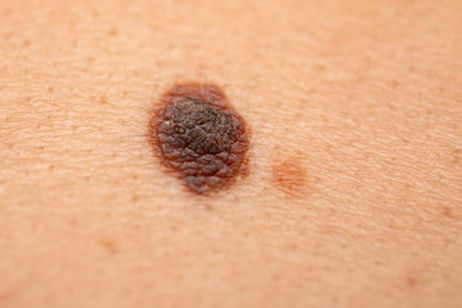
Melanoma Treatment Options in Singapore
Melanoma is the most dangerous type of skin cancer. It typically occurs in the skin but may also occur in other areas such as in the head and neck, intestinal and genitourinary systems.
There is a 99% 5-year survival rate for patients in the US when melanoma is detected early.
MISCONCEPTIONS
Asians or other ethnicities cannot get skin cancer - this is a misconception as anyone is prone to getting skin cancer. Although the chances are reduced, there is still a possibility.

HOW TO DIAGNOSE?
Patients may present with a new mole, or changes in an existing mole such as bleeding or increase in size. In fact, there are the ABCDEs of melanoma that you can look out for if you suspect a mole, or a lesion on your skin is suspicious:
A: Asymmetry
Most melanomas are asymmetrical and this means that the shape is inconsistent, and is hardly a circle or an oval.
B: Border
Most melanoma borders tend to have uneven borders, while common moles tend to have smoother and more even borders.
C: Colour
If you notice that your mole has multiple colours, it is worth getting checked out. Normal and common moles usually only have one shade of brown, while a melanoma may have varying shades of brown or black. As it grows over time, colours like red, blue or white may even appear.
You should also note if the lesion appears darker than others. There is a rare type of melanoma called amelanotic melanoma that is colourless.
D: Diameter
Notice the size of your moles - if the lesion is larger than 6mm, it is worth observing it and check if it ticks any of the other boxes mentioned above.
E: Evolving
If there is any change in size, shape, colour, or elevation - or even other symptoms like bleeding, itching, or crusting, do see a doctor for an evaluation.
WHAT CAUSES IT TO OCCUR?
UV rays from the sun or even from tanning beds damage the DNA in your skin cells. Generally, your immune system can help to repair this damage but over time, the remaining DNA damage may lead to mutations which causes skin cancer.
Having unprotected or excessive UV exposure, fair skin, many moles, or a weakened immune system increases the risk of contracting skin cancer. Additionally, if any one of your family members had a history of skin cancer, it also increases the risk and early screening should be done.
HOW CAN YOU PREVENT IT/ IS IT PREVENTABLE?
Take care to protect your skin from the harmful UV rays - when going out, remember to apply sunblock and also cover adequately. It is best to avoid indoor tanning entirely as well.
IS IT COMMON?
It is common amongst caucasians owing to skin pigmentation. People with fairer skin, especially those with red or blonde hair, green or blue eyes, or those who develop freckles and burns easily have a higher risk and hence, it is more common.
However, this is not to say that other ethnicities cannot contract melanoma.
TREATMENT
Some treatment options are surgery, immunotherapy, targeted therapy, chemotherapy, and radiation. It depends on the stage of the disease, location of the disease, and your overall health conditions.
Some treatment options may not suit certain patients, and your surgical oncologist or oncologist will advise you.
Our doctors at Melissa Teo Surgery and The Surgical Oncology Clinic take extra care in coming up with a holistic plan for you. You will be actively involved in the discussions to ensure that you are comfortable with the decision made.
Read our melanoma post to find our more on this skin cancer.